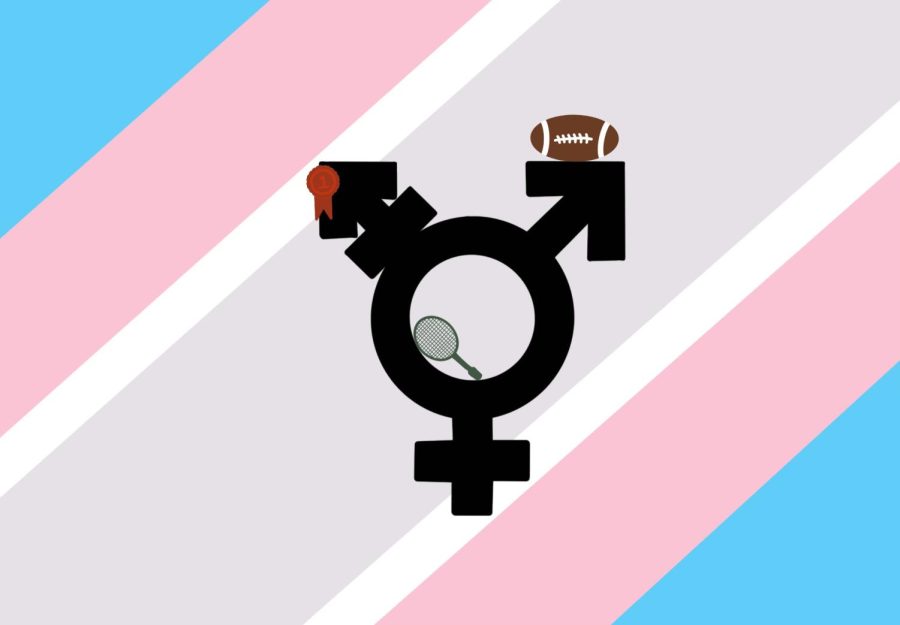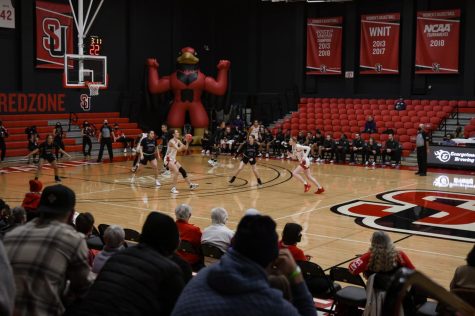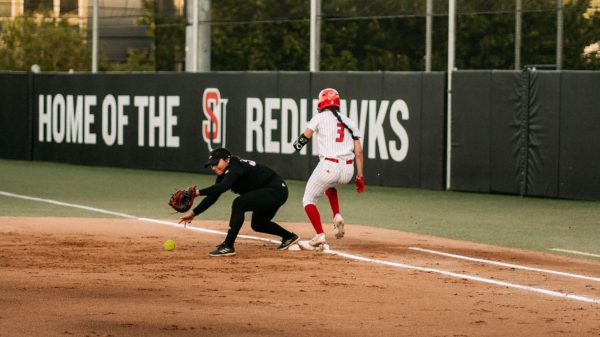Where Can Transgender Athletes Belong in the Global Athletic Sphere?
Last month, World Athletics, the world’s most prominent track and field organization, banned transgender women from participating in track and field competitions at international levels. The policy went into effect March 31 and was passed with the intention to preserve “the integrity of female competitions,” but with “no athletics-specific evidence of the impact these athletes would have on the fairness of female competition in athletics,” according to a March 23 press release.
Following the ban, the U.S. House of Representatives passed a Republican-led bill that intends to prohibit transgender women and girls from competing in federally-funded school sports. If the bill passes in the Senate, revisions would likely be made to the civil rights law, Title IX, that prohibits discrimination on the basis of sex in federally-funded educational programs and activities. It would then be required that a student’s sex be “based on an individual’s reproductive biology and genetics at birth.”
However, with the Democrat-controlled Senate, it is unlikely the bill will pass. President Biden has also vowed to veto the bill if necessary.
Only 32% of LGBTQ+ youth participate in sports, according to a survey from The Trevor Project. A number of people choose not to become involved in sports due to reasons related to fear of discrimination related to their identity. Cal Calamia, a nonbinary, transmasculine runner and inclusivity activist, is concerned the ban could harm younger trans people and the navigation of their identity in a world where they are seemingly unwelcome.
“[The ban] sends the message that trans people should not be athletes, but I think the more harmful message is that people who are athletes should not transition. That is what kills trans people—–them not understanding that they can transition,” Calamia said.
As it stands, this ban has the potential to further limit the visibility of trans people and raises the question of how queer people can participate in a sports world where heteronormativity dominates. Calamia and other athletic activists are interested in promoting inclusivity in the running world and ensuring that the voices of queer people in sports are being heard.
“Transgender people are so underrepresented in athletics in general because of the whole conversation about how we shouldn’t be there. That sort of discrimination prevents queer people—–specifically trans folks—–from participating in sports and being physically active,” Calamia said. “I think a huge, powerful tool in this conversation is actually giving the microphone to trans people to talk about their experiences and to just humanize us.”
In their efforts to promote inclusivity, Calamia worked closely with the Chicago and Boston marathons to add a nonbinary section for runners to compete in. However, they made the distinction that though it provides a space for nonbinary runners, it does not solve everything.
Sports have a history of regulating gender distinctions and valuing heteronormative participants in athletics. Gender-policing in women’s sports has been prevalent since the early 20th century, with sex verification tests in the 40s and chromosomal testing of all female athletes competing at international levels up until the 90s. Though some argue that these measures ensure fair competition, advocates point out that these regulations continuously exclude minorities, specifically queer people, from being involved.
Gio Santiago, senior field organizer for Athlete Ally, an LGBTQ+ athletic advocacy group, emphasized the need for education and support from allies on this issue.
“We would love to see folks continue to get educated on what it means to be queer or transgender. There is so much misinformation, so being able to combat that is what we aim to do. Separate divisions work for certain sports and leagues, but that is not a blanket solution. Having allies step up and speak out is always very helpful,” Santiago wrote to The Spectator.
Ensuring that people are properly informed on the grounds of LGBTQ+ identity is crucial before decisions regarding their ability to participate within wide public spheres are made. Santiago emphasized that transgender women are being pushed out of sports at every level, and their opportunities to showcase their skills are being limited.
The conversation is far from being over and is said to still be continuing within World Athletics, according to their press release.
“The Council agreed to set up a Working Group for 12 months to further consider the issue of transgender inclusion,” the release stated. “This working group will include an independent chair, up to three council members, two athletes from the Athletes’ Commission, a transgender athlete, three representatives of the Member Federations and representatives of the World Athletics Health and Science Department.”
With more bans constantly being passed to limit the abilities of transgender people, this raises the question of how they will be able to participate not only in the world of sports but in society in general.







![Josh Gibson Supplants Ty Cobb, Babe Ruth, as Baseball’s Best Hitter [OPINION]](https://seattlespectator.com/wp-content/uploads/2024/05/gettyimages-72075891-600x338.jpg)



